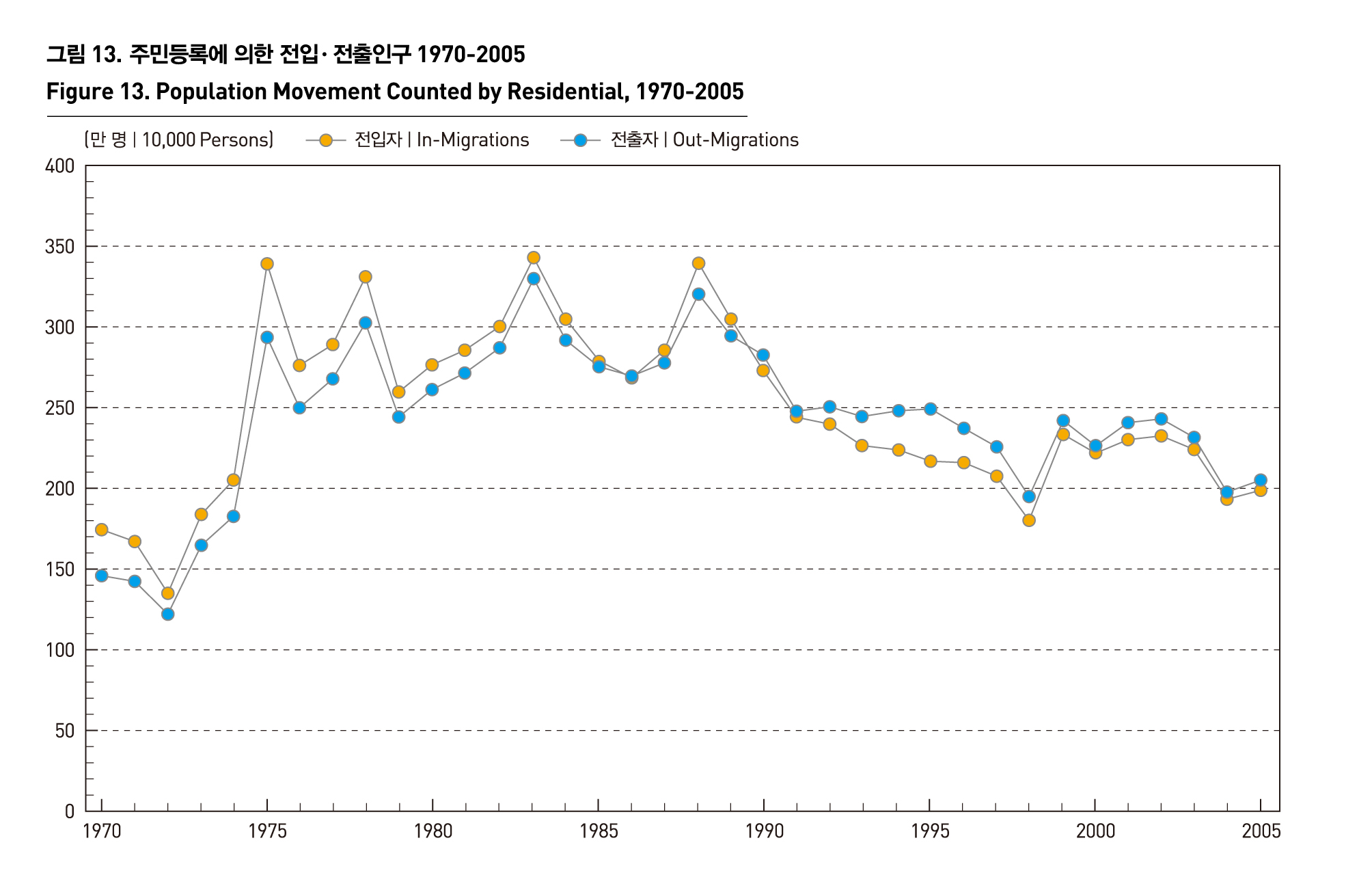-
인구
인구이동
-
인구이동
도시의 인구이동은 사회변동과 발전의 맥락에서 이해해야 한다. 1970년대 이후 서울의 인구이동 양상은 근대적인 의미의 인구이동으로서의 도시집중화 현상이다. 인구 전입량과 전출량의 차이를 지역 전체의 인구수로 나눈 것이 인구의 순이동률인데, 1970~1975년 사이 한국사회의 농촌과 도시간 순이동자의 60.8%가 서울로 이동한 것으로 나타나 당시 이동 인구의 대부분이 서울로 몰렸음을 알 수 있다. 한편 1980년대 이후 1990년대까지의 인구이동은 농촌인구의 이동에 의한 것이라기보다 한국사회가 국가발전계획에 따른 전반적인 사회 및 경제변동을경험하면서 지역의 경제적 기회와 전망, 이와 관련된 정부 정책과 지원 요소들이 함께 작동한 결과로 볼 수 있다.
1990년대 이후 서울의 인구이동은 서울 외곽 수도권 신도시의 개발에 따라 전출이 전입을 초과하는 현상이 계속되고 있다. 그러나 2000년 이후 순이동률은 점차 낮아지는 가운데 국지적으로 전입초과 현상이 보인다. 구로구 일부, 서초구와 강남구 일부, 마포구 일부에서의 전입 초과현상은 대규모 아파트 개발과 외국인 인구의 증가 등에 기인하다고 하겠다.
POPULATION MOVEMENT
If you divide the difference of in-migrants and out-migrants by the total population in a region, you can get net migrant rate. About 60.8% of migrants moving between a farm village and a city from 1970 to 1975 were found to move to Seoul, reflecting that most migrants flocked to Seoul. The population movement from 1980s to 1990s can be attributed to economic opportunity and prospects, and related government policies and support amid social and economic transformation resulting from national development plan rather than movement of the farm population.
Seoul has seen more out-migrants than in-migrants since 1990s, thanks to development of new towns in the suburbs of Seoul. Net migrant rate has continued to be on the decrease since 2000, and there are more in-migrants than their counterparts in some regions. The excessive number of inmigrants can be blamed on the large-scale development of apartments and increasing number of foreigners in Guro-gu, Seocho-gu, Gangnam-gu and Mapo-gu.
출처 : 서울특별시, 서울통계연보, 2006
서울특별시, 정보화기획단 통계분석팀


